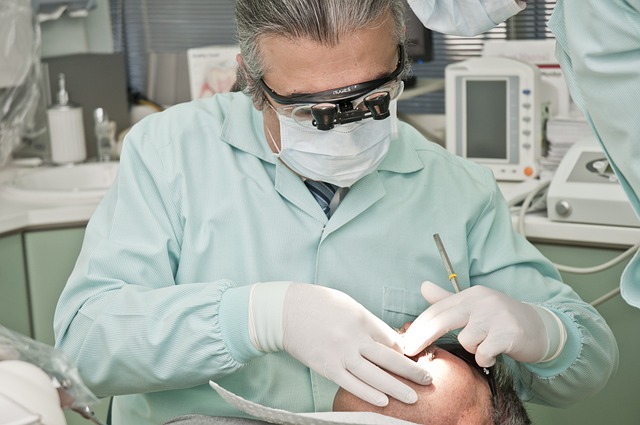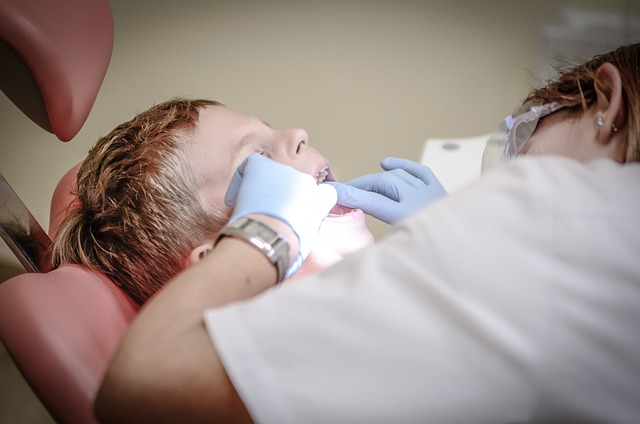Post-Tooth Extraction: To Gauze or Not to Gauze?
Welcome to our informative article on a topic that can cause some confusion among those who have just had a tooth extraction: Should you use gauze or not? We understand that post-tooth extraction care can be a bit overwhelming, but fret not, we’re here to guide you through the process with a friendly tone and provide you with the information you need to make an informed decision. So grab a cup of tea, sit back, and let’s dive into the debate of “To gauze or not to gauze?
1. Understanding the Importance of Proper Aftercare Following a Tooth Extraction
After undergoing a tooth extraction, it is crucial to provide proper aftercare to promote healing and minimize discomfort. Here are some key reasons why following the correct aftercare instructions is essential:
1. Preventing Infection: The extraction site is susceptible to bacterial infection, which can cause pain and delay healing. Following proper aftercare, such as regularly rinsing with saltwater and keeping the area clean, helps to minimize the risk of infection.
2. Reducing Discomfort: It’s normal to experience some discomfort after a tooth extraction, but proper aftercare techniques can help manage it. Applying a cold compress to the cheek near the extracted tooth can decrease swelling, while taking prescribed pain medications as directed can alleviate any lingering pain.
- Also, avoid consuming hard or chewy foods that can irritate the extraction site.
- Use a soft-bristle toothbrush for oral hygiene to prevent any additional trauma to the area.
- It’s important to refrain from smoking or using straws, as the suction can dislodge the blood clot and delay healing.
By following these aftercare tips and the instructions provided by your dentist, you can ensure a smoother and more comfortable recovery process after a tooth extraction.

2. Why Gauze Can Be Beneficial After a Tooth Extraction
Gauze can be incredibly beneficial after a tooth extraction for several reasons. Firstly, it helps to control bleeding by applying gentle pressure on the extraction site. This helps to form a blood clot, which is crucial for the healing process and prevents excessive bleeding. It’s important to remember not to remove the gauze too soon, as this could disrupt the clot and lead to further bleeding.
Additionally, gauze acts as a protective barrier, preventing food particles and bacteria from entering the open socket. This is especially important in the first few days after the extraction when the area is most vulnerable to infection. It also helps to absorb any excess saliva that may accumulate, promoting a clean and dry environment for optimal healing.

3. Exploring the Purpose of Gauze and How It Aids in Recovery
Gauze is a commonly used medical material that plays a crucial role in aiding recovery. It is a thin, loosely woven fabric that is designed to be sterile, absorbent, and breathable. Let’s explore the purpose of gauze in medical settings and how it helps patients on their road to recovery.
Protection: Gauze serves as a protective barrier, shielding wounds and injuries from external contaminants such as dirt, bacteria, and germs. Its open-weave structure allows for adequate air circulation while keeping out unwanted particles. This feature not only helps prevent infections but also promotes a clean healing environment.
Moisture absorption: Another vital function of gauze is its ability to absorb moisture from wounds. Whether it’s blood, pus, or other bodily fluids, gauze quickly wicks away the excess moisture, keeping the injured area dry. This promotes faster healing and reduces the risk of complications such as maceration or fungal growth.

4. The Step-by-Step Guide: Proper Application of Gauze After a Tooth Extraction
To ensure proper healing and prevent complications after a tooth extraction, it is crucial to apply gauze correctly. Here is a step-by-step guide to help you through the process:
1. Clean your hands: Before handling the gauze, wash your hands thoroughly with soap and warm water. This helps reduce the risk of infection.
2. Fold the gauze: Take a sterile piece of gauze and fold it into a small, thick square. The folded gauze should be large enough to cover the extraction site.
3. Bite down gently: Once folded, firmly bite down on the gauze with gentle pressure. This helps control any bleeding and promotes clot formation.
4. Change gauze regularly: After about 30 minutes, remove the old gauze and check for bleeding. If bleeding continues, fold a new piece of gauze and repeat the process. Change the gauze every 30 minutes until bleeding subsides.
5. Avoid excessive rinsing: Refrain from rinsing your mouth vigorously for the first 24 hours after the extraction. This can dislodge the blood clot and delay the healing process. Instead, gently rinse your mouth with a saltwater solution after 24 hours to keep the area clean.
6. Take pain medication as prescribed: If your dentist has prescribed pain medication, take it as directed. This will help manage any discomfort you may experience.

5. An Alternative Approach: Can You Opt for No Gauze After Tooth Extraction?
If you’ve recently had a tooth extraction, you may be familiar with the post-operative routine of using gauze to control bleeding and promote healing.
However, an alternative approach has gained popularity, which questions the necessity of using gauze after tooth extraction. While it’s important to consult with your dentist or oral surgeon for personalized advice, some individuals have found success with this alternative method. Here’s what you need to know:
- Gentle and controlled biting: Instead of applying pressure with traditional gauze, this approach relies on gentle biting on a folded tea bag or a moistened black tea bag. The natural ingredients in black tea, including tannins, can help to promote blood clotting and soothe the extraction site.
- Regular rinsing: Rinsing your mouth gently with warm saltwater can help maintain oral hygiene and reduce the risk of infection. Avoid using mouthwash containing alcohol, as it may irritate the extraction site.
- Avoiding strenuous activities: Engaging in intense physical activities, including heavy lifting or exercising, can disturb the clotting process. It’s best to take it easy for the first 24 hours after the extraction.
Remember, everybody’s recovery process differs, so it’s crucial to communicate with your dentist or oral surgeon before making any changes to your post-operative routine. They will provide specific instructions based on your unique circumstances to ensure a smooth and successful recovery.
6. The Pros and Cons: Weighing the Benefits and Drawbacks of Gauze Usage
When it comes to gauze usage in medical settings, there are several pros and cons that should be taken into consideration. Let’s examine the benefits and drawbacks to help you make an informed decision.
Pros:
- Gauze provides excellent absorbency, making it ideal for absorbing blood, drainage, or other bodily fluids.
- It helps to prevent infections by keeping wounds clean and reducing the risk of bacteria buildup.
- Gauze dressings are versatile and can be cut or folded to fit different wound sizes and shapes.
- It’s easy to use and change, which is particularly useful in situations where frequent dressing changes are required.
- Availability and affordability are a major advantage, as gauze dressings are widely accessible and cost-effective.
Cons:
- Gauze dressings may stick to the wound, causing pain and discomfort when removing or changing them.
- They may not provide adequate protection against contamination in high-risk environments or with heavily exuding wounds.
- In some cases, gauze can cause allergic reactions or irritation, especially if the patient has sensitive skin.
- Due to its porous nature, gauze can dry out wounds, hindering the healing process for certain types of injuries.
7. Tips for Choosing the Right Gauze Material for Your Post-Tooth Extraction Recovery
Gauze material plays a critical role in your post-tooth extraction recovery, as it helps control bleeding and promotes healing. Here are a few tips to help you choose the right gauze material:
- Opt for sterile gauze: Ensure that the gauze you select is sterile to prevent any risk of infection. Sterile gauze is individually wrapped and free from contaminants, providing a clean environment for your healing socket.
- Consider the size and thickness: Depending on the extent of your extraction, choose gauze that suits your needs. Typically, 2×2-inch or 4×4-inch gauze pads are recommended. Thicker pads are more absorbent and can effectively control bleeding, but they may be less comfortable to wear. Finding the right balance between thickness and comfort is important.
- Look for non-stick and gentle fabric: The gauze should have a non-stick surface to prevent it from adhering to the extraction site and causing discomfort during removal. Look for soft and gentle fabric, such as cotton or non-woven material, which will be soothing against your gums.
Remember, it’s always a good idea to consult your dentist or oral surgeon for specific recommendations on gauze material. They can provide personalized advice based on your unique needs and ensure a smooth recovery process.
8. Frequently Asked Questions: Addressing Common Concerns About Gauze Usage
Here are some answers to the most frequently asked questions about gauze usage:
Q: How often should I change the gauze?
A: It is recommended to change the gauze every 4-6 hours or as instructed by your healthcare professional. This ensures that the gauze remains clean and hygienic, promoting faster healing of wounds or injuries. If the gauze becomes saturated or dirty before the next scheduled change, it should be replaced immediately.
Q: Can I reuse gauze after washing it?
A: No, it is not advisable to reuse gauze after washing it. Gauze is designed for single-use only to maintain its sterile properties. Reusing gauze increases the risk of introducing bacteria or other contaminants to the wound, which can lead to infection. It is essential to use fresh, clean gauze for optimal wound care.
9. Expert Insights: What Dentists Recommend After a Tooth Extraction
After a tooth extraction, it’s important to follow the advice of dental experts to ensure a smooth recovery and minimize discomfort. Here are some valuable insights from dentists to help you through this process:
- Rest is key: Take it easy and avoid strenuous activities for at least 24 hours after the procedure. This will allow your body to focus its energy on the healing process.
- Gentle oral hygiene: Maintain your oral hygiene routine by brushing your teeth. However, be cautious around the extraction site. Avoid vigorous rinsing or touching the area with your fingers or tongue to prevent irritation or dislodging the blood clot.
- Pain management: Some discomfort and swelling are common after a tooth extraction. Dentists often recommend over-the-counter pain relievers like ibuprofen to alleviate pain and reduce swelling. Always follow the dosage instructions and consult your dentist if the pain persists.
Dentists also advise patients to avoid smoking, as it can impair the healing process and increase the risk of complications. Additionally, sticking to soft foods like yogurt, mashed potatoes, and soup during the first few days can prevent irritation and promote healing. Lastly, keeping the mouth clean is crucial, and using a saltwater rinse (dissolve half a teaspoon of salt in eight ounces of warm water) can help reduce bacteria and promote healing. Remember, every patient is unique, so it’s vital to consult your dentist for personalized advice based on your specific situation.
10. The Final Verdict: Making an Informed Decision About Using Gauze After Tooth Extraction
When it comes to making the best decision regarding the use of gauze after a tooth extraction, there are a few key factors to consider. Here’s what you need to know:
First and foremost, gauze can be a helpful tool in controlling bleeding and promoting proper healing after a tooth extraction. By applying gentle pressure to the extraction site, gauze can help to form a blood clot and prevent excessive bleeding. It also provides a protective barrier, minimizing the risk of infection. However, it’s important to remember that every individual and situation is unique, so it’s crucial to consult with your dentist or oral surgeon for personalized advice.
- Start using gauze as directed: Your dentist or oral surgeon will provide specific instructions on when and how to use gauze after your tooth extraction. Follow these instructions carefully to ensure proper healing.
- Change gauze regularly: It’s essential to change the gauze regularly, as instructed. This helps to maintain cleanliness, prevent infection, and promote healing.
- Don’t use gauze excessively: While gauze can be beneficial, using it excessively can interfere with the healing process. Avoid leaving gauze in your mouth for an extended period, as it may disrupt the formation of a blood clot.
In conclusion, gauze can be a useful tool for managing bleeding and aiding in the healing process after a tooth extraction. While it’s essential to follow your dentist’s advice, gauze should be used with caution and not excessively. By making an informed decision and using gauze properly, you can help ensure a successful and comfortable recovery.
Frequently Asked Questions
Q: Why is it important to use gauze after a tooth extraction?
A: Using gauze after a tooth extraction helps control bleeding, assists with forming a blood clot, and promotes faster healing.
Q: How should I place the gauze in my mouth after a tooth extraction?
A: Gently bite down on a folded piece of sterile gauze, placing it directly on the extraction site. Apply enough pressure to create a firm bite but make sure not to bite too hard to avoid further irritation.
Q: How long should I keep the gauze in my mouth?
A: It is usually recommended to keep the gauze in place for around 30 to 45 minutes after the tooth extraction. However, the duration may vary depending on the instructions provided by your dentist.
Q: What should I do if the bleeding doesn’t stop after removing the gauze?
A: If the bleeding persists after removing the gauze, gently bite down on a new piece of gauze for another 30 minutes. If the bleeding still doesn’t subside, it is advisable to contact your dentist for further instructions.
Q: Can I eat or drink while using the gauze?
A: It is best to avoid eating or drinking while using the gauze to allow the clot to form properly. Doing so may dislodge the blood clot and cause further bleeding.
Q: What should I do if the gauze gets stuck to the extraction site?
A: If the gauze sticks to the extraction site, do not panic. Moisten the gauze with a few drops of water or saline solution to prevent it from sticking and gently remove it.
Q: Can I replace the gauze with a tea bag?
A: In some cases, using a slightly damp black or green tea bag can help control bleeding and provide relief. However, it’s always best to consult with your dentist to ensure this method is suitable for your situation.
Q: Are there any alternative options to using gauze after a tooth extraction?
A: While gauze is commonly used, your dentist may suggest alternative methods such as using a specialized dental sponge or dissolvable hemostatic agents. These alternatives can help control bleeding and promote healing based on your specific situation.
Q: Is it normal to experience some bleeding after a tooth extraction, even with gauze?
A: Yes, it is normal to experience minor bleeding for a short period after a tooth extraction, even with the use of gauze. However, if the bleeding persists excessively or feels abnormal, it’s best to consult your dentist.
Q: Can I remove the gauze if the bleeding stops before the recommended time?
A: It is generally recommended to follow the dentist’s instructions and keep the gauze in place for the suggested duration, even if the bleeding appears to have stopped. This ensures proper clot formation and aids in the healing process.
Conclusion
In conclusion, the decision to use gauze after a tooth extraction ultimately depends on the individual’s circumstances and the guidance provided by their dentist. While gauze pads can help control bleeding and promote wound healing, it is essential to follow the right techniques to avoid complications. Remember to bite down gently and change the gauze regularly to maintain cleanliness and ensure effective clot formation. If you experience excessive bleeding or any concerns during your recovery, always reach out to your dental professional for guidance and reassurance. With the right aftercare and some patience, you’ll be well on your way to a smooth and comfortable recovery after your tooth extraction. Remember, a little extra caution and care go a long way in ensuring your oral health remains in tip-top shape. Happy healing!





